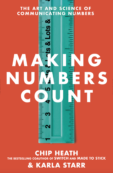I am strangely fascinated by the philosophical debates about PowerPoint. Edward Tufte, who’s a hero of ours, is virulently opposed to PowerPoint. I’m someone who uses it constantly, so it would be a bit hypocritical for me to rant against it. True, I think it enables a lot of our worst tendencies (being verbose, summarizing rather than unpacking, using bulletized abstractions rather than concrete examples, thinking in terms of a collection of points rather than a storyline, “telling” rather than teasing, etc. … as a matter of fact, this parenthetical comment is itself rather PowerPointian). But I also have to say that the existence of Krispy Kreme enables a lot of my worst tendencies, too, and I don’t have an unkind word to say about them. It’s certainly *possible* to create a kick-ass PowerPoint, and it’s certainly *possible* not to eat a half-dozen doughnuts when you walk in KK. So.
In the WSJ, Lee Gomes has interviewed the inventors of PowerPoint to get their take on the anti-PPT criticisms. The surprise: They basically agree. Here’s an excerpt:
Mr. Gaskins and Mr. Austin, now 63 and 60, respectively, reflected on PowerPoint’s creation and its current omnipresence in an interview last week. They are intensely proud of their technical and strategic successes. But to a striking degree, they aren’t the least bit defensive about the criticisms routinely heard of PowerPoint. In fact, the best single source of PowerPoint commentary, both pro and con, (including a rich vein of Dilbert cartoons) can be found at RobertGaskins.com, his personal home page.
Perhaps the most scathing criticism comes from the Yale graphics guru Edward Tufte, who says the software “elevates format over content, betraying an attitude of commercialism that turns everything into a sales pitch.” He even suggested PowerPoint played a role in the Columbia shuttle disaster, as some vital technical news was buried in an otherwise upbeat slide.
No quarrel from Mr. Gaskins: “All the things Tufte says are absolutely true. People often make very bad use of PowerPoint.”
Mr. Gaskins reminds his questioner that a PowerPoint presentation was never supposed to be the entire proposal, just a quick summary of something longer and better thought out. He cites as an example his original business plan for the program: 53 densely argued pages long. The dozen or so slides that accompanied it were but the highlights.
Since then, he complains, “a lot of people in business have given up writing the documents. They just write the presentations, which are summaries without the detail, without the backup. A lot of people don’t like the intellectual rigor of actually doing the work.”



